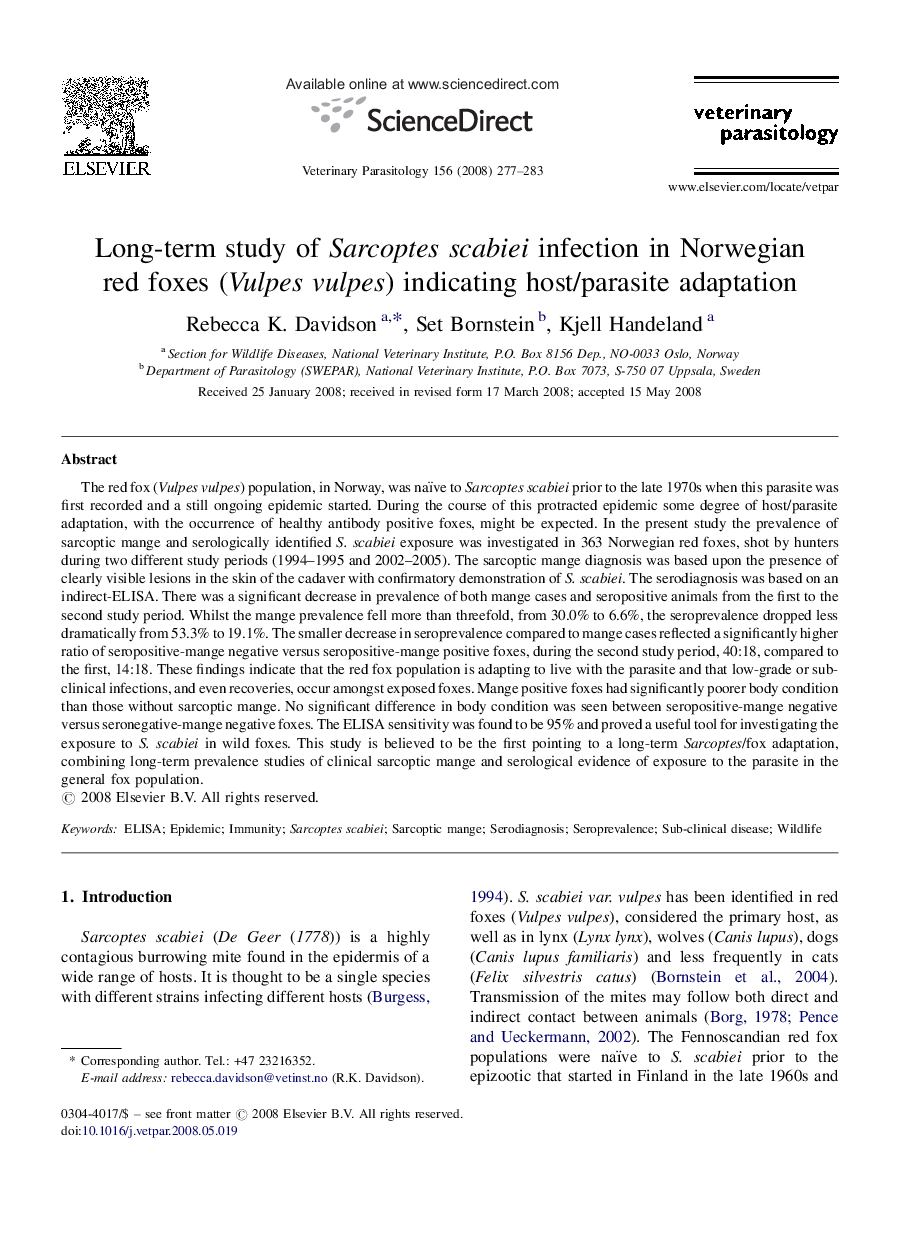| کد مقاله | کد نشریه | سال انتشار | مقاله انگلیسی | نسخه تمام متن |
|---|---|---|---|---|
| 2471576 | 1555763 | 2008 | 7 صفحه PDF | دانلود رایگان |

The red fox (Vulpes vulpes) population, in Norway, was naïve to Sarcoptes scabiei prior to the late 1970s when this parasite was first recorded and a still ongoing epidemic started. During the course of this protracted epidemic some degree of host/parasite adaptation, with the occurrence of healthy antibody positive foxes, might be expected. In the present study the prevalence of sarcoptic mange and serologically identified S. scabiei exposure was investigated in 363 Norwegian red foxes, shot by hunters during two different study periods (1994–1995 and 2002–2005). The sarcoptic mange diagnosis was based upon the presence of clearly visible lesions in the skin of the cadaver with confirmatory demonstration of S. scabiei. The serodiagnosis was based on an indirect-ELISA. There was a significant decrease in prevalence of both mange cases and seropositive animals from the first to the second study period. Whilst the mange prevalence fell more than threefold, from 30.0% to 6.6%, the seroprevalence dropped less dramatically from 53.3% to 19.1%. The smaller decrease in seroprevalence compared to mange cases reflected a significantly higher ratio of seropositive-mange negative versus seropositive-mange positive foxes, during the second study period, 40:18, compared to the first, 14:18. These findings indicate that the red fox population is adapting to live with the parasite and that low-grade or sub-clinical infections, and even recoveries, occur amongst exposed foxes. Mange positive foxes had significantly poorer body condition than those without sarcoptic mange. No significant difference in body condition was seen between seropositive-mange negative versus seronegative-mange negative foxes. The ELISA sensitivity was found to be 95% and proved a useful tool for investigating the exposure to S. scabiei in wild foxes. This study is believed to be the first pointing to a long-term Sarcoptes/fox adaptation, combining long-term prevalence studies of clinical sarcoptic mange and serological evidence of exposure to the parasite in the general fox population.
Journal: Veterinary Parasitology - Volume 156, Issues 3–4, 1 October 2008, Pages 277–283